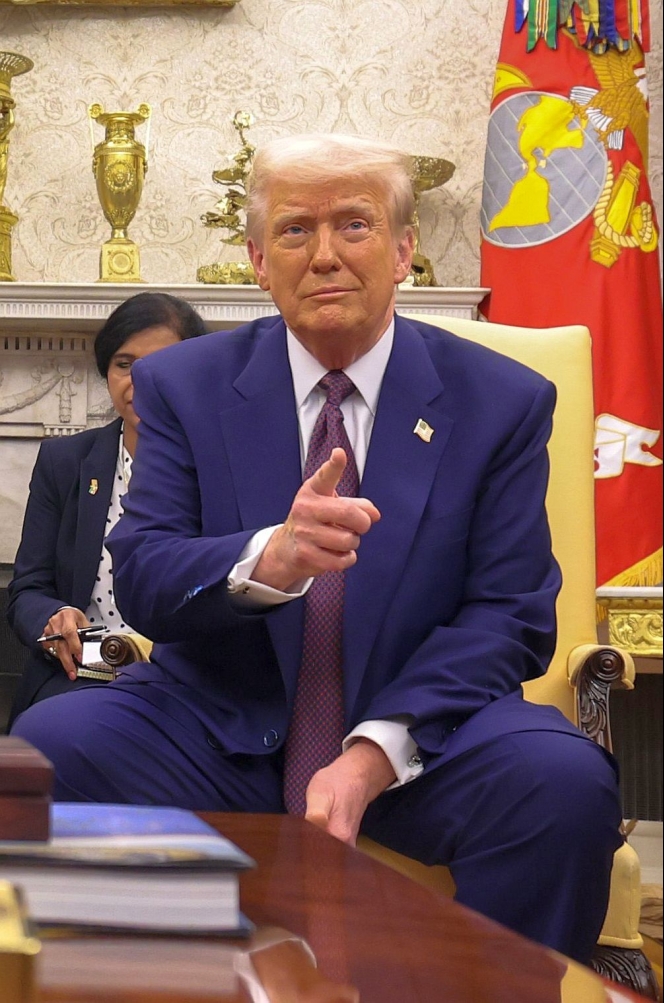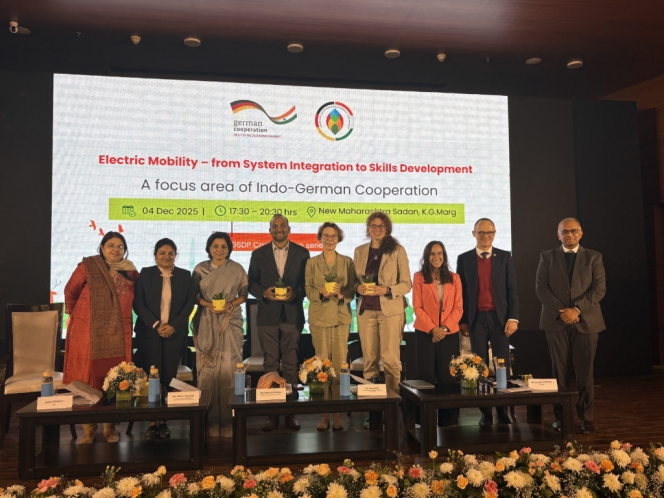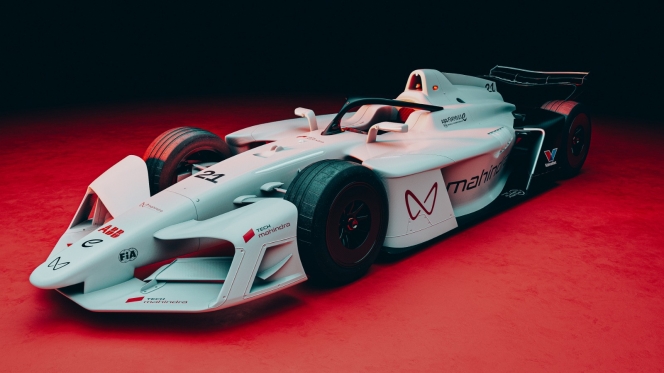- US President Donald Trump
- 2 April 2025
- American Industry
- broad new tariff policy
- duty
- imports
- India
- 26 percent
- ‘discounted' reciprocal tariffs
- China
- Countries
- auto industry
- ancillary
- ACMA
US President Donald Trump Announces Retaliatory Tariffs; Indian Government Carefully Examining The Implications
- By Bhushan Mhapralkar
- April 03, 2025

After terming India’s import duty barriers high for some time, US President Donald Trump has expressed that 2 April 2025 will be remembered as the day the American industry was reborn as his government announced a broad new tariff policy that imposes at least a 10 percent duty on nearly all imports from certain countries. In the case of India, the policy speaks of 26 percent ‘discounted' reciprocal tariffs. The tariff on China, on the other hand, is 34 percent.
Aimed at protecting American farmers and ranchers, according to Trump, the broad-based tariff policy is also being termed as ‘national emergency’ driven in view of the ongoing trade deficits, which hit a record USD 1.2 trillion in 2024.
The German auto industry has reacted to the US policy by stating that it 'will only create losers'. While the Asian stock markets have shrunk in response to the announcement, the Indian Ministry of Commerce is analysing the impact of the 26 percent ‘discounted’ tariff announcement.
Mentioning in its statement that it understands the intent of the US administration to boost domestic manufacturing and address trade imbalances, the Indian auto components apex body ACMA (Automotive Component Manufacturers Association of India) has said that autos and auto parts as well as steel and aluminium articles are already subject to Section 232 tariffs at 25 percent announced earlier by the US President’s order on 26 March 2025. A detailed list of auto components that will be subject to 25 percent import tariff is awaited, it mentioned.
Shraddha Suri Marwah, President, ACMA and CMD, Subros Ltd, averred, “ACMA remains hopeful that the ongoing bilateral negotiations between the Indian and U.S. governments will lead to a balanced resolution that benefits both economies. We believe that the strong trade relationship between India and the United States, especially in the auto components sector, will encourage continued dialogue to mitigate the impacts of these measures. ACMA is committed to engaging with all stakeholders to ensure the long-term interests of the Indian auto component industry.”
Saurabh Agarwal, Partner and Automotive Tax Leader, EY India, observed, "With US automotive tariffs rising, India's electric vehicle sector has a prime opportunity to capture a larger share of the US market, especially in the budget car segment.” He drew attention to the fact that China's 2023 auto and component exports to the US stood at US$17.99 billion whereas India's were only US$2.1 billion in 2024, highlighting the potential for growth. “To accelerate this, the government should enhance the PLI scheme by including more auto components, opening it to new players, and extending it by two years,” he added.
Mrunmayee Jogalekar, Auto and FMCG Research Analyst, Asit C Mehta Investment Interrmediates Ltd, expressed, “Certain sectors such as auto and auto ancillary, which are already subject to a separate 25 percent tariff announced in March are exempt to the levy of reciprocal tariffs. This means no additional tariffs will be imposed on this sector.”
Stating that other exempted segments include copper, pharmaceuticals, semiconductors, critical minerals and energy products, she informed,
“Since import duties apply to all trading partners, the extent of impact will vary across sectors and countries based on competitive advantages.” “For the Indian auto component industry, which derives around 30 percent of its revenue from exports, with 30 percent of that coming from the US, this could result in a potential hit on sales or profit margins,” she added.
In FY2024, ACMA reported that India exported USS$ 6.79 billion worth of auto components to the US. It imported only USS 1.4 billion, resulting in a substantial trade surplus in India's favour.
Against the backdrop of the broader tariff policy that speaks of a 26 percent duty of Indian exports to US, the discussion between Indian and the US regarding the bilateral trade agreement will assume importance as well as urgency. For US automotive companies to find their way to the Indian market despite their near cult status – the likes of Harley Davidson and Tesla – will only mean facing a competition that is stiffer than expected and a customer mindset that is far different from how it is in the US.
Srikumar Krishnamurthy, Senior Vice-President & Co-Group Head, Corporate Ratings, ICRA, said, "The US Government has imposed a 25 percent tariff on passenger vehicles (sedans, sport utility vehicles, crossover utility vehicles, minivans and cargo vans) and light trucks (collectively referred to as automobiles), which come into effect from 3 April 2025. As the PV exports from India to the USA represent less than 1 percent of the total PV exports, the tariff imposition of the tariff does not have any material impact on the Automotive OEMs. The scenario is however different for auto components. On 12 March 2025, a 25 percent tariff was imposed on all aluminium and steel components being imported into the US. Subsequent to this, on 26 March 2025, a 25 percent tariff was imposed on other key auto parts as well (including engines, transmissions, powertrain components and key electrical parts except those under USMCA), with processes to expand tariffs on additional parts, if necessary. The effective date is pending but is expected to be no later than 3 May 2025. Auto components have not featured in the latest set of additional tariff announcements that has been made on 2 April 2025. India’s auto components exports accounted for around 29 percent of industry revenues in FY2024. Of this, about 27 percent went to the US. While the situation is evolving, the recent tariff related development and the consequent inflationary pressures and slowdown in demand in the US could have a negative impact on revenue and earnings for component exporters (in the affected product categories) over the next few months. Nevertheless, with higher tariffs being levied on other competing nations, this could also create long-term opportunities for the exporters. Exporters dependent on the US are also trying to diversify their revenue base across other geographies (including Asia). Measures to improve value addition, diversification into non-auto segments and cost-optimisation strategies are also being worked upon to reduce the potential impact on margins.
Image for representative purpose only.
Vingroup Announces $3 Billion Multi-Sector Investment In Telangana
- By MT Bureau
- December 09, 2025
Vietnam’s Vingroup has signed a strategic memorandum of understanding (MoU) with the Government of Telangana, outlining a comprehensive plan to develop a multi-sector ecosystem through a proposed phased investment of USD 3 billion. This expansive collaboration aims to drive socio-economic growth in the Indian state through major initiatives in smart urban development, electric mobility, healthcare, education, tourism and renewable energy.
The partnership’s most ambitious component is the planned creation of a large-scale smart city. This new urban area, designed to accommodate approximately 200,000 residents, will integrate sustainable planning principles with international-standard amenities and is expected to generate significant local employment. Supporting this community, Vingroup will develop essential social infrastructure, including international-grade multi-specialty hospitals and an integrated K-12 school system.
A key pillar of the initiative is establishing a sustainable electric mobility ecosystem. This involves launching India's first large-scale electric taxi service within Telangana, supported by a widespread network of charging stations. To ensure a green power supply for this fleet, urban areas and industrial zones, Vingroup further proposes to develop a substantial solar farm. The collaboration will also enhance Telangana’s tourism appeal through a dedicated complex featuring theme parks and wildlife attractions.
The Telangana government has committed to supporting these projects by facilitating land allocation, assisting with master planning and administrative procedures and mobilising the necessary connecting infrastructure. This foundational agreement not only marks a significant step in Vingroup’s international expansion but also strengthens economic and business ties between Vietnam and India, creating a framework for future cooperation and mutual growth.
A Revanth Reddy, Hon’ble Chief Minister, Government of Telangana, said, “The USD 3 billion investment by Vingroup is a massive vote of confidence in the ‘Telangana Rising’ vision, particularly our focus on sustainable urban development and green infrastructure. This is more than capital; it’s a partnership to build a futuristic, net-zero city and introduce India’s first large-scale electric taxi fleet, directly improving the quality of life for our citizens. Our government guarantees accelerated execution to ensure this global vision becomes a local reality.”
D Sridhar Babu, Hon'ble Industries Minister, Government of Telangana, said, "Vingroup's multi-sectoral commitment, spanning smart cities, solar power and advanced social infrastructure like hospitals and schools, demonstrates the stability and breadth of Telangana’s industrial policy. We are committed to translating this significant capital inflow into local opportunity, positioning Telangana as the gateway for Vietnamese and South-East Asian investment into India's fastest-growing economy."
Sanjay Kumar, IAS, Special Chief Secretary to the Government, Government of Telangana, said, “We welcome Vingroup’s presence in Telangana and recognise the achievements the Group has made in Vietnam, particularly in urban development, green infrastructure and electrified transportation. With the Group’s extensive expertise and capability to execute large-scale projects, we believe that this cooperation will mark an important step forward in shaping a modern and sustainable urban landscape and improving the quality of life for the people of Telangana.”
Pham Sanh Chau, CEO of Vingroup Asia and VinFast Asia, said, “Vingroup sees tremendous potential in Telangana and we aspire to build a long-term partnership with the state government. With our proven track record in delivering mega urban developments, large-scale infrastructure and a comprehensive electric mobility ecosystem, we believe that our collaboration with Telangana will generate tangible value, promote sustainable development and enhance the quality of life for local residents.”
- Indo-German Partnership for Green and Sustainable Development Goal
- Christine Toetzke
- Federal Ministry for Economic Cooperation and Development
India And Germany Discuss Electric Mobility Ecosystem Transformation
- By MT Bureau
- December 05, 2025

India and Germany convened a high-level roundtable under the Indo-German Partnership for Green and Sustainable Development (GSDP) to discuss solutions for advancing electric mobility ecosystems. The ninth edition of the GSDP Conversation Series focused on ‘Electric Mobility: From System Integration to Skills Development’.
The roundtable brought together senior officials from key central ministries, state and city administrations, public transport undertakings, distribution companies (DISCOMs), industry leaders and international partners to address the shift from fragmented pilots to a coordinated, ecosystem-wide transformation.
The discussion underlined that India can only achieve its electric mobility targets through integrated planning across various sectors, including renewable energy, transportation, manufacturing, finance and skills. Stronger coordination among the central government, states and cities was also noted as key to successful implementation.
The participants prioritised five key themes to shape the next phase of India’s e-mobility transition:
- Multimodal Electrification: Integrating metro, bus, shared mobility and last-mile services into a unified electric transport system.
- Charging Infrastructure and Grid Readiness: Enhancing coordination with DISCOMs, ensuring land and power capacity, standardising charging systems and strengthening battery safety and circularity.
- Financing and Procurement: Improving bankability, payment security, risk sharing, contract structures and financial instruments for e-buses and commercial EVs.
- Skills and Gender Inclusion: Addressing shortages in EV engineering, charger installation, battery management, safety and digital mobility services while expanding opportunities for women.
- Indo-German Collaboration: Advancing cooperation in areas such as grid management, multimodal planning, standardisation, battery circularity and vocational training.
Christine Toetzke, Director General for Asia, Latin America, Middle East & Eastern/Southeastern Europe, Federal Ministry for Economic Cooperation and Development (BMZ), Germany, said, “Germany and India share a long-standing partnership rooted in trust, ambition, and a shared vision for a greener future. The Green and Sustainable Development Partnership is central to our international engagement, reflecting our joint commitment to make development both climate-compatible and socially inclusive. Electric mobility is not merely a technological shift; it is a transformation of how our societies move, how we design our cities, and how we create opportunities for future generations. As India advances this transition at a remarkable scale and speed, Germany stands ready to support with system-level planning, vocational skills development and innovation in areas such as battery management and circular economy solutions. Our cooperation is a long-term investment in cleaner air, safer mobility, and more equitable access to opportunity for all.”
Senior officials emphasised the importance of aligning national schemes with local implementation capacity, noting that India now requires system-wide approaches that combine depot electrification, grid readiness, multimodal integration, transparent procurement models and a skilled workforce. The dialogue reaffirmed the commitment of both nations to accelerate clean, efficient and inclusive mobility solutions.
- Hagerty UK
- Vehicle Excise Duty Exemption
- VED Exemption
- Historic & Classic Vehicles Alliance
- Classic Cars
UK Chancellor Maintains Vehicle Excise Duty Exemption For Classic Cars
- By MT Bureau
- November 27, 2025

The UK's cherished classic car community can finally breathe a collective sigh of relief. The decisive action by Chancellor Rachel Reeves in the Autumn Budget to maintain the Vehicle Excise Duty (VED) exemption for vehicles over 40 years old has ended a prolonged period of uncertainty, securing a stable future for this vital sector. Mark Roper, Managing Director of Hagerty UK, welcomed this clarity, noting that the confirmed freeze on fuel duty further solidifies a supportive environment for owners. He underscores that this is a significant win for the GBP-7.3-billion industry that supports over 100,000 jobs and contributes GBP 3 billion annually to the UK economy, all while championing an inherently sustainable form of motoring.
This perspective on sustainability is reinforced by Dale Keller, CEO of the Historic & Classic Vehicles Alliance (HCVA), who affirms that the tax exemption logically aligns with environmental objectives. Classic vehicles, preserved as moving heritage, have a negligible lifecycle carbon footprint compared to new manufacturing and are driven infrequently. The original principle of the exemption remains valid, as applying a modern tax to these rarely used assets would be inequitable.
Alongside the VED news, the Chancellor confirmed the continuation of the MOT exemption for classic cars, though this will remain under review. On this point, Roper of Hagerty UK strikes a note of caution, observing that many within the industry advocate for an annual roadworthiness check. He notes that a great number of responsible classic owners voluntarily submit their vehicles for an MOT each year, valuing the independent assurance of safety and mechanical integrity it provides.
For Hagerty UK, as a specialist insurer deeply embedded in this world, the government’s affirmation is a powerful endorsement of the sector's cultural and economic value. Through its vibrant Clubhouse at Bicester Heritage and unique events like RADwood, Hagerty is actively fostering this passionate community. Similarly, the HCVA continues its mission to protect and promote the diverse ecosystem of specialists, restorers and businesses that form the backbone of this multi-billion-pound industry, ensuring its legacy for generations to come.
Mahindra Racing Extends Formula E Involvement With GEN4 Manufacturer Commitment
- By MT Bureau
- November 26, 2025

Mahindra Racing has solidified its long-term future in electric motorsport by confirming its manufacturer commitment to the GEN4 era of the ABB FIA Formula E World Championship, starting in 2026/27. This announcement, made during the unveiling of its new M12Electro race car in India, extends a relationship that began in 2013 when Mahindra stood as both a founding team and the first OEM to join the all-electric series.
The team's current trajectory underscores the significance of this pledge. Following a dramatic 18-month transformation under CEO and Team Principal Frederic Bertrand, Mahindra Racing has evolved from a backmarker into a consistent front-runner. This resurgence was powered by the redesigned M11Electro, in which drivers Nyck de Vries and Edoardo Mortara collectively secured five podium finishes in Season 11, catapulting the squad to a stellar fourth place in the world championship. The newly launched M12Electro is the intended vehicle to maintain this status as a top-five contender and a regular threat for podium positions in the forthcoming season.
The technical landscape for GEN4 promises to further electrify the sport. The next-generation cars will boast a peak race power of 450 kw, with a potent 600 kw available in ATTACK MODE to empower aggressive overtaking. Enhanced strategic possibilities will come from a race energy capacity of up to 55 kWh and a remarkable 700 kw of regenerative braking. In a continued commitment to sustainability, the GEN4 chassis will be produced from 100 percent recyclable materials and will feature two distinct aerodynamic configurations – high-downforce for qualifying and low-downforce for races – to optimise performance.
Mahindra's ambition is to leverage this new regulatory chapter to build on its renewed momentum, chase incremental gains and establish itself as a confirmed championship contender against elite manufacturers like Porsche and Jaguar. This competitive platform also serves a broader purpose, aligning with the Mahindra Group’s sustainability initiatives. The team, the first in Formula E to earn the FIA’s Three-Star Sustainability Accreditation, has embarked on its ‘Planet Positive’ programme. This initiative is dedicated to driving positive impact in communities and economies, accelerating climate solutions and using the intersection of sport and technology as a catalyst for a better future.
R Velusamy, Chairman, Mahindra Racing, said, "Mahindra Racing has always been a symbol of our commitment to the Race to Road journey – where cutting-edge innovation on the track directly shapes the clean, intelligent and high-performance mobility solutions we deliver to customers. Formula E is a powerful platform for innovating new technology, giving us the ability to experiment, learn and advance electric powertrain efficiency, sustainable materials and software intelligence. As we step into the GEN4 era, our ambition only grows stronger. Continuing this journey till 2030 is a testament to our belief in the sport, in electrification and in India’s role in leading global sustainable mobility. We are proud to champion this future, and GEN4 represents an exciting new chapter for Mahindra Racing and the Mahindra Group.”
Frederic Bertrand, Team Principal, Mahindra Racing, said, “I’m delighted to share this announcement that Mahindra Racing will remain in Formula E as a manufacturer for the GEN4 era. As a team, we have been on a fantastic journey over the past two seasons. What we have built and achieved as a group has been exceptional, and with this announcement, we now have the platform to keep growing and developing and achieve even greater success in the future. None of this would be possible without our colleagues across the Mahindra Group. They have bought into the project and the vision, and we will keep working hard to not only make India proud but also showcase exactly why it has the potential to be a major player on the world stage in the automotive and technology industries. Their enthusiasm to ‘Scream Electric’ is hugely inspiring to the whole team, and we will continue to represent them with pride in this next exciting chapter of our Formula E story in the coming years.”
Jeff Dodds, CEO, Formula E, said, “We’re thrilled to confirm Mahindra’s long-term commitment to the GEN4 era of the ABB FIA Formula E World Championship. As one of our founding teams, Mahindra has been with us since the very beginning, consistently championing electric racing and innovation. Their bold vision for sustainable mobility and continued investment in advanced EV technology perfectly align with Formula E’s mission. Mahindra’s enduring presence not only strengthens our position in a key market but also reinforces Formula E’s role as a global platform for driving positive change. We’re excited to see what they’ll achieve in this next chapter of performance and progress.”
Marek Nawarecki, Senior Circuit Sport Director, FIA, said, “Following the GEN4 reveal and the really positive sentiment reported, we are pleased to announce Mahindra as the sixth manufacturer to commit to Formula E’s GEN4 era. This is testament to the relevance of the road map we are implementing in Formula E for OEMs. GEN4 underscores just how far the ABB FIA Formula E World Championship has come since 2014 and we are looking forward to continuing this journey with Mahindra as one of the founding teams and partners.”





Comments (0)
ADD COMMENT